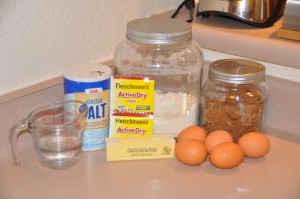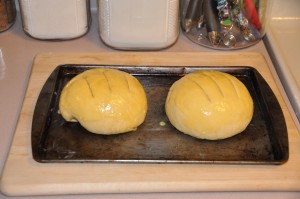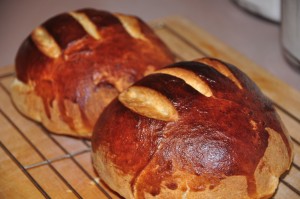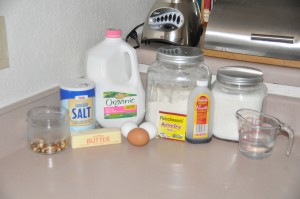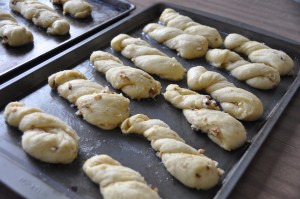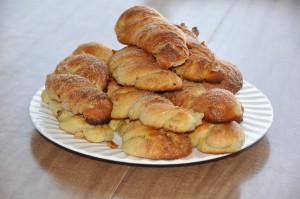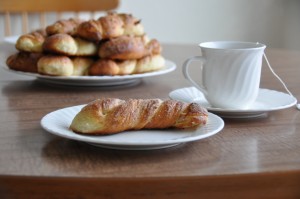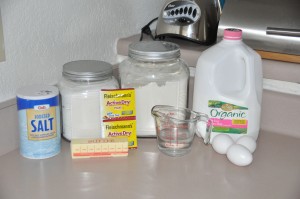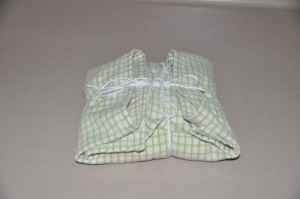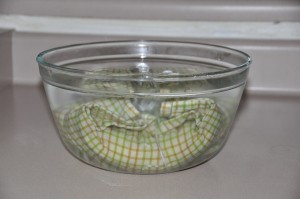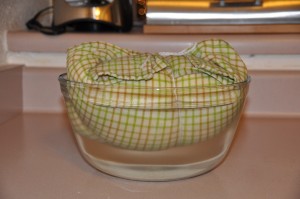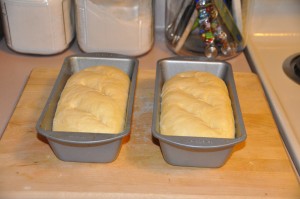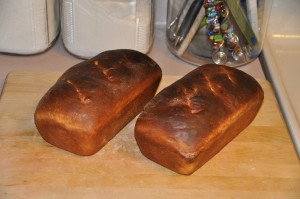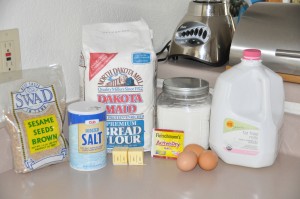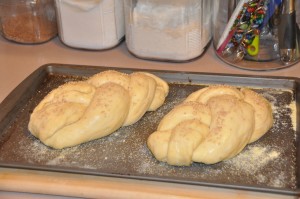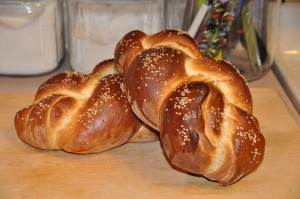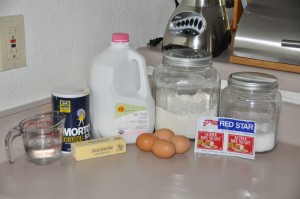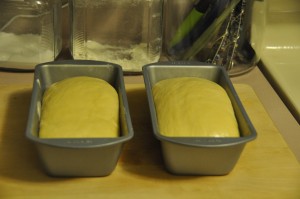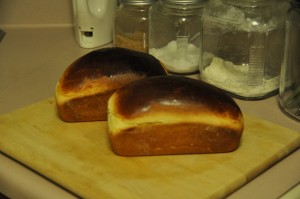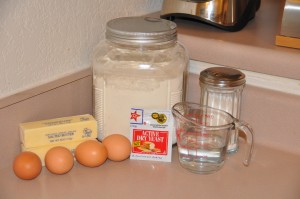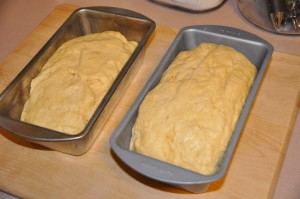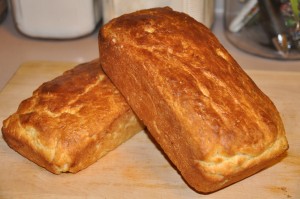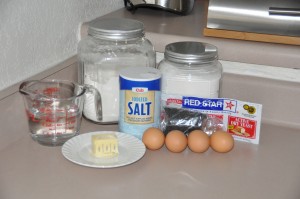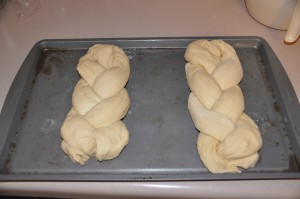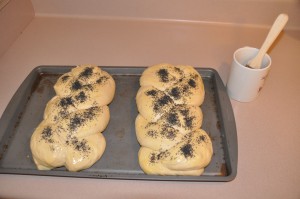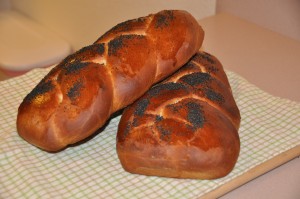“This is a rather sweet brioche-type bread, exceedingly light and baked free form.”
-James Beard, Beard on Bread
On Thursday night, I made the last of the Egg Breads: Italian Holiday Bread. It was a good weeknight recipe, because it only requires one rising.
Here are the ingredients:
This is a recipe that does the Egg Bread chapter justice–two whole eggs, three egg yolks, and then an additional egg yolk (egg not pictured) for the glaze.
I found that the amount of butter (one stick to four cups of flour) yielded a very clay-like dough that was difficult to knead and shape into loaves. I finally resorted to rolling the dough into two circles with rolling pin and then pulling the edges together to form a round loaf.
After nearly two hours of rising time, I brushed the loaves with an egg yolk, water, flour, and sugar mixture and made a few artistic cuts in the top.
I pulled the loaves out after 30 minutes at the oven at 325 degrees. Only after cutting into the loaves did I discover a very small doughy portion in the center of one, and the other was baked through. I still struggle with the occasional under-baked free-form loaf, especially since they both sounded hollow when I rapped them with my knuckles.
Italian Holiday Bread wasn’t at all what I was expecting. From Beard’s description, I imagined a light, sweet bread. In actuality, the texture was heavier (closer to Brioche Bread than Water-Proofed Bread) and was very slightly sweetened.
Since I like lighter breads, Italian Holiday Bread isn’t an egg bread that I would make again. However, it did provide me with some good experience shaping free-form loaves.

